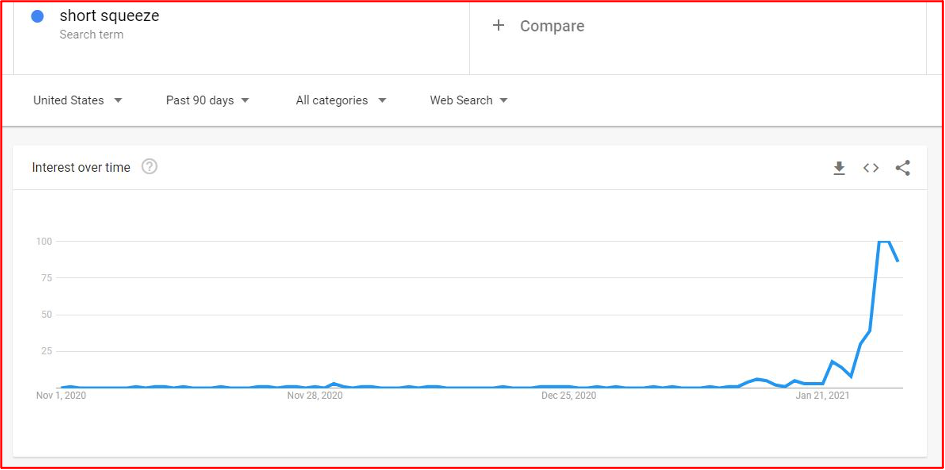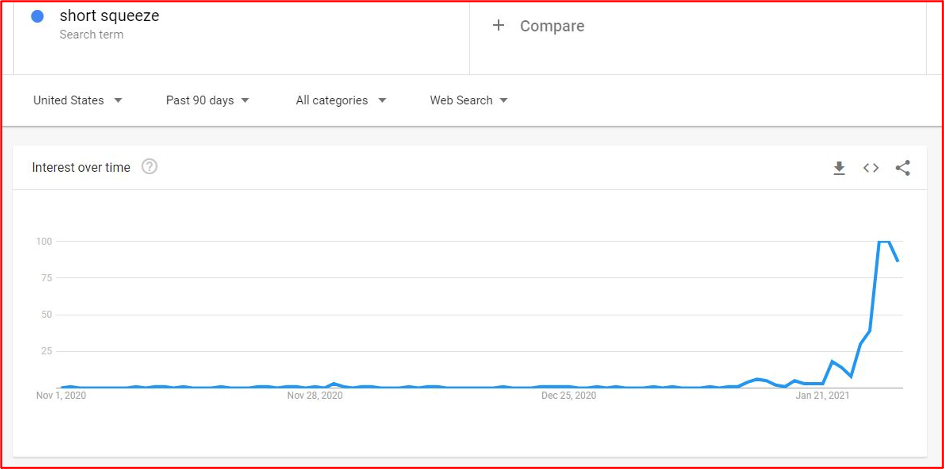Unless you've been living in a cave (and with all the CV19 restrictions in place it does sometimes feel like that) you couldn’t avoid the short squeeze on Gamestop last week. Short squeeze shot up the Google search rankings as retail investors jumped in. We thought it would be interesting to look back in time at some of the other short squeezes and the reasons behind them.

Chesapeake Energy – March 2016
The Oil and exploration sector had been under pressure for some time with short interest at 40% more than the publicly traded shares available. In early March, Chesapeakes founder and former CEO, Aubrey McClendon, had been indicted over conspiracy to rig bids for oil leases. After Chesapeake announced they did not expect to face fines or prosecution, the stock spiked. Additionally, the oil price had climbed 14% that year resulting in a huge short squeeze on energy stocks. Chesapeake stock ended March up nearly 50%.
JC Penney – Feb 2014
Short interest in JC Penney stood at 43% in the lead up to their earnings announcement in Feb 14. When JC Penney announced smaller than expected losses and improved margins, their turnaround plan appeared to be working. The shares jumped 25% in one day, some based on fundamentals but a significant amount was based on short sale coverage.
Nokia – Sep 2013
Yes, they have been in another short squeeze. At the end of August 13, short interest was high at 12% of Nokia’s market float. A surprise announcement by Microsoft to acquire Nokia’s mobile devices arm led to a 50% increase in share price in one day. Many short sellers were burned exiting their positions pushing the stock even higher.
Herbalife – 2012 - 2018
A $1bn short in Herbalife was initiated by Bill Ackman at Pershing Square. This was an unusual squeeze as it took place over the course of several years. Ackman believed the operating model of Herbalife was fundamentally flawed. The issue was that Carl Icahn disagreed and took an opposing long position. Herbalife managed to improve its financial position over the following years and the stock price grew. Ackman exited his position in February 2018 with a reported loss of $1 billion.
Solv-Ex Feb 2016
We wanted to conclude with a win for the short sellers. Solv-Ex was established in 1980 by Samuel a. Francis (a convicted securities fraud felon) and John Rendall. The firm purported to have technology to extract oil from tarladen sand. Solv-Ex had raised capital through a series of private placements and offshore offerings. Short seller has begun to circle the company in 2016 based on the correct assumption the firm was a fraud. Solv-Ex launched two defensive, and apparently legal, plays to squeeze the shorts.
“To help you control the value of your investment … we suggest that you request delivery of the Solv-Ex certificates from your broker as soon as possible”. This letter to shareholders was an attempt by Solv-Ex to remove shares from the stock lending system. It worked to a certain extent with the price rising from $24.875 to $35.375 20 days later on the 21 February 1996. Additionally, Solv-Ex hired private investigators and filed a lawsuit against a well-known short seller, claiming they had spread false information. Solv-Ex’s fraud was exposed the following year and the stock was delisted at $4.25 per share.
There is normally a good reason that short interest is high, however, a surprise acquisition, better than expected results or a retail investors forum on Reddit can catch even the most sophisticated investors off guard. Silver options anybody…….

